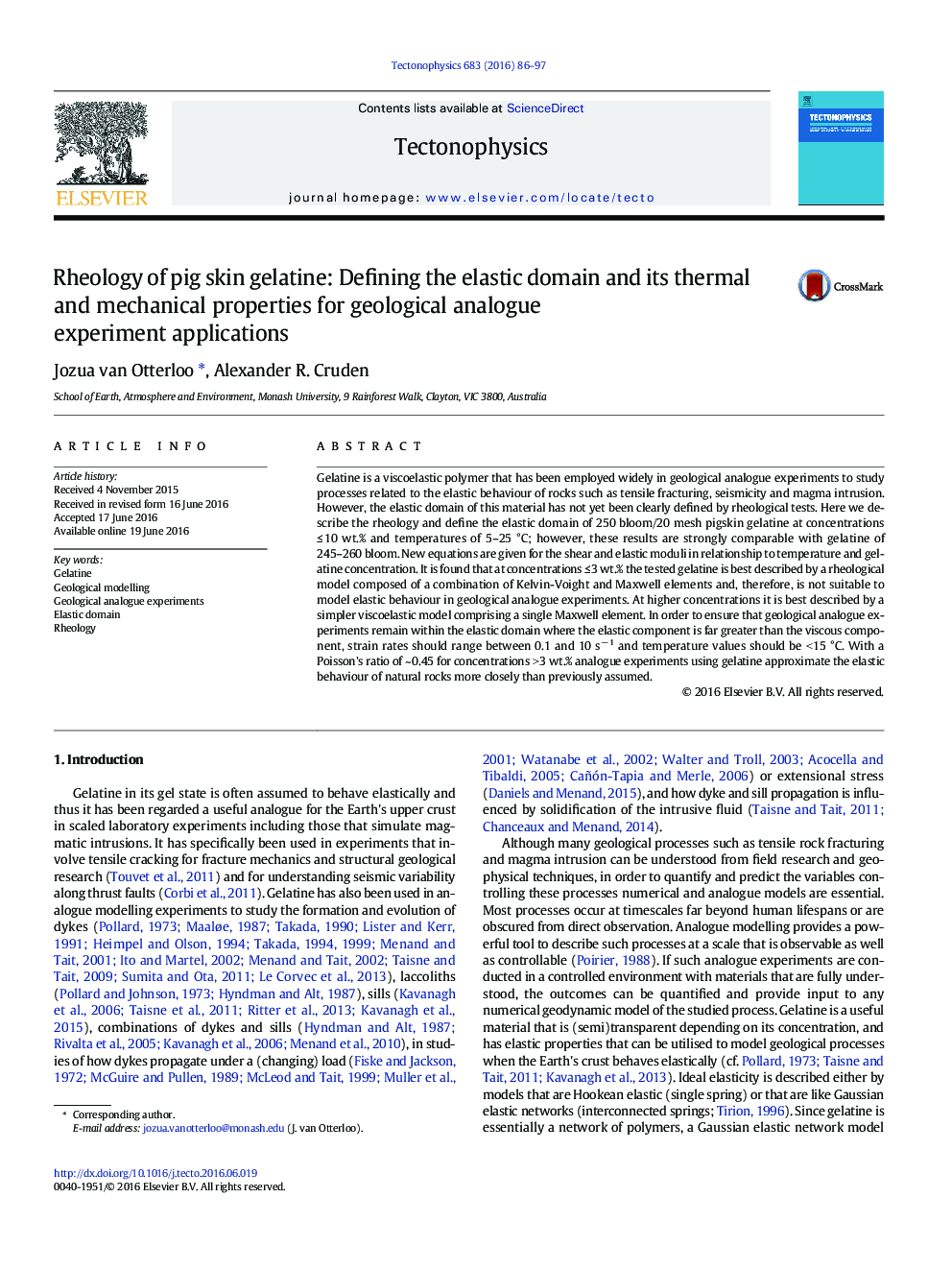| کد مقاله | کد نشریه | سال انتشار | مقاله انگلیسی | نسخه تمام متن |
|---|---|---|---|---|
| 6433369 | 1636715 | 2016 | 12 صفحه PDF | دانلود رایگان |
- Rheology of pigskin gelatine for geological analogue experiments has been determined.
- The elastic domain of 250 bloom gelatine has been defined to model elastic behaviour of geological materials.
- For gelatine to behave elastically, strain rates should range between 0.1 and 10 sâ 1 and temperature values should be 5-15 °C.
- These results are comparable and applicable to gelatine of 245-260 bloom.
Gelatine is a viscoelastic polymer that has been employed widely in geological analogue experiments to study processes related to the elastic behaviour of rocks such as tensile fracturing, seismicity and magma intrusion. However, the elastic domain of this material has not yet been clearly defined by rheological tests. Here we describe the rheology and define the elastic domain of 250 bloom/20 mesh pigskin gelatine at concentrations â¤Â 10 wt.% and temperatures of 5-25 °C; however, these results are strongly comparable with gelatine of 245-260 bloom. New equations are given for the shear and elastic moduli in relationship to temperature and gelatine concentration. It is found that at concentrations â¤Â 3 wt.% the tested gelatine is best described by a rheological model composed of a combination of Kelvin-Voight and Maxwell elements and, therefore, is not suitable to model elastic behaviour in geological analogue experiments. At higher concentrations it is best described by a simpler viscoelastic model comprising a single Maxwell element. In order to ensure that geological analogue experiments remain within the elastic domain where the elastic component is far greater than the viscous component, strain rates should range between 0.1 and 10 sâ 1 and temperature values should be < 15 °C. With a Poisson's ratio of ~ 0.45 for concentrations > 3 wt.% analogue experiments using gelatine approximate the elastic behaviour of natural rocks more closely than previously assumed.
Journal: Tectonophysics - Volume 683, 30 June 2016, Pages 86-97
